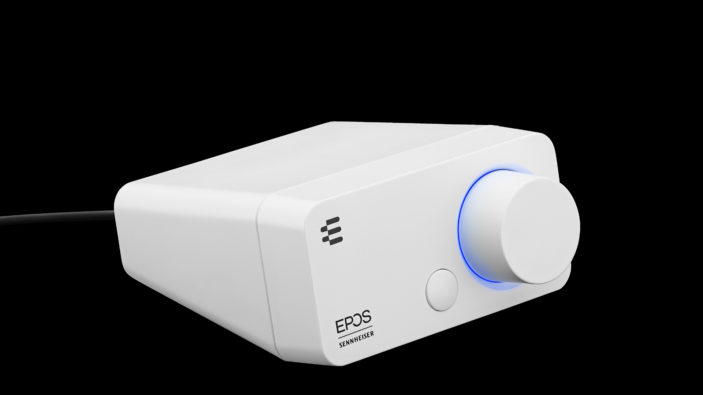

I can see consumers turning the box for the EPOS GSX 300 over and wondering why they might need such a device. Sound cards are not, strictly speaking, the kind of hardware one thinks about when building a gaming PC. Most motherboards these days come with on-board sound that works just fine, negating any need for all but the most hardcore audiophiles to add a sound card to the build queue.
But as streaming on platforms like Twitch and YouTube have grown in profile, a need has emerged for better sound overall. Enter the EPOS GSX 300 external soundcard.
It’s a small, inconspicuous desktop box that takes control of your PC’s sound away from the motherboard and does its business elsewhere. What exactly is that business? It’s called DAC, or digital-to-audio conversion. This is the process of your computer decoding digital audio into something your ear can actually interpret. While your PC is very good at this already, it isn’t perfect. It’s just one thing among many others that it can do.
The GSX300 specialises in this task, removing itself from your PC’s inner framework to lower the liklihood of electromagnetic interference, which can add noise to the signal through distortion or artifacting. What it supports is 24 bit / 96 kHz (Hi-res) audio in Stereo, and 16 bit / 48 kHz (which is a higher sampling rate than standard “Redbook” CDs which are 16 bit / 44 kHz) audio with the virtual Surround Sound using the EPOS Gaming Suite. Parent company Sennheiser says it has plans for hi-res surround sound support in the future.
You can check the device out at eposaudio.com/gaming. The EPOS GSX 300 retails for an RRP of $129.90.
